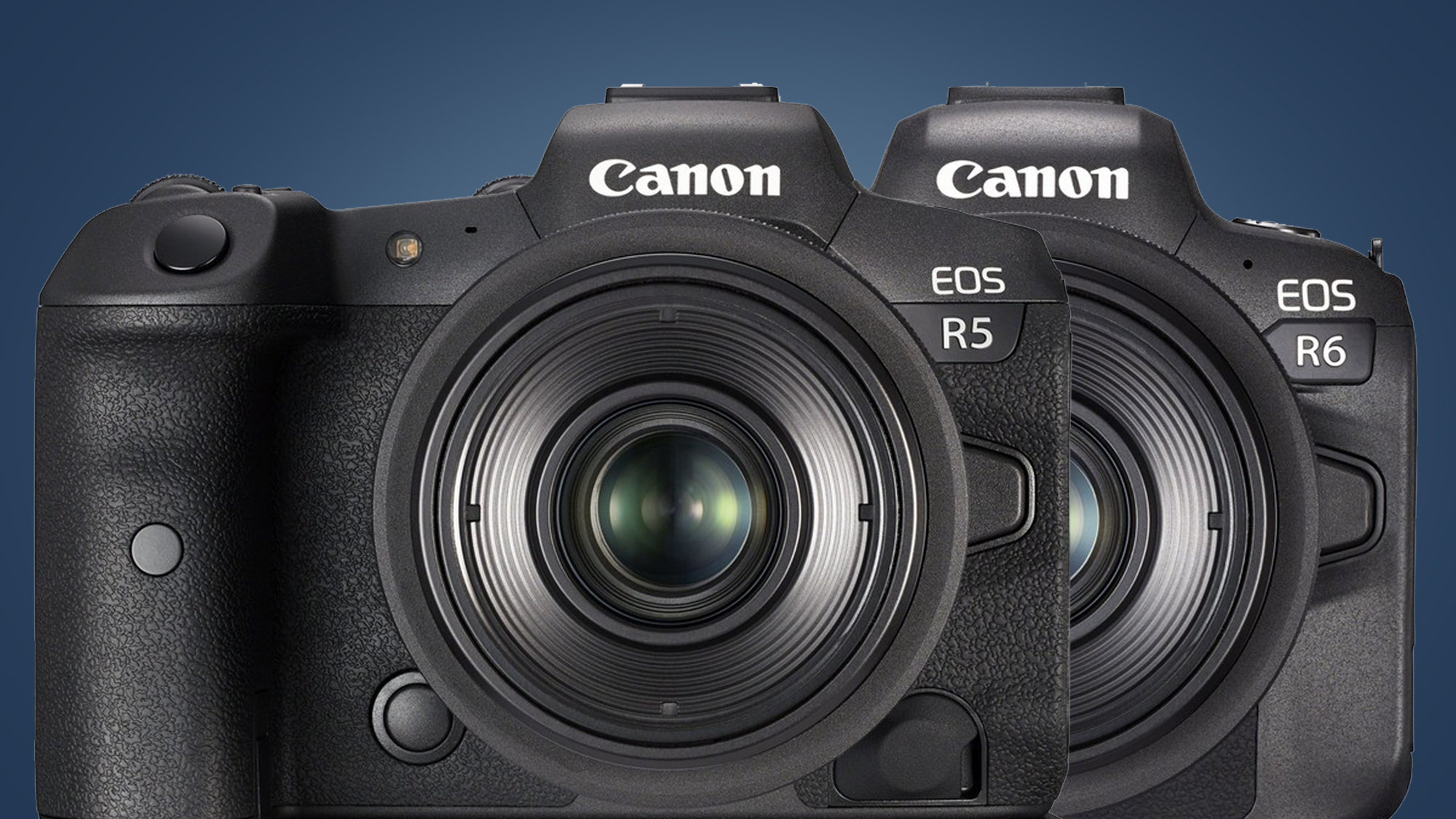Canon EOS R5 and EOS R6 get treated to big video upgrades

The Canon EOS R5 and Canon EOS R6 are both excellent video cameras, and they just became even more tempting for pro filmmakers thanks to some video-focused firmware upgrades.
Back in March, the Canon EOS R5 received the popular Canon Log 3 format, which is a useful addition for anyone who likes to color grade their videos. Well, that format will now be available to owners of the EOS R6 (and EOS 1D X Mark III) if they upgrade to their latest firmware on Canon's support page.
So-called 'Log' formats are a bit like a cross between JPEGs and raw files for video, offering small file sizes and plenty of editing leeway. The Canon Log 3 format (or C-Log 3 for short) delivers greater dynamic range than standard Canon Log, and also slots neatly into editing workflows containing footage from Canon's cinema cameras.
- These are the best full-frame cameras you can buy right now
- Or check out our guide to the world's best mirrorless cameras
- Read our in-depth Canon EOS R5 review
But the firmware updates aren't just about boosting the choice of Log formats. They also bring dual card recording to both the Canon EOS R5 and EOS R6, which means you can record the same video file (including the same resolution, frame-rate and codec) to both memory cards simultaneously.
It's previously been possible to record proxy files (which are essentially compressed backups) of 8K videos on the EOS R5, but you'll soon be able to record full-size backups in certain modes. The EOS R5's update will be available in "summer 2021", so sometime between now and mid-September.
Canon does warn that some restrictions may apply on the EOS R5, because it has different memory card slots (one is CFexpress Type B, the other UHS-II). This means it won't be possible to record some resolutions and frame-rates (like 8K/30p) on both cards, but it's a useful addition for filmmakers all the same.
Talking of 8K, the Canon EOS R5's update also bring support for CFexpress VPG400 (Video Performance Guarantee) cards, which guarantee stable write speeds of at least 400MB per second, making them ideal for shooting 8K of raw footage. And impressively, the EOS R5 firmware update will also make it possible to shoot 8K ProRes RAW, a popular recording codec, externally to the new Atomos Ninja V+ external monitor.
Sign up for breaking news, reviews, opinion, top tech deals, and more.

Movie stars
You could argue that Canon should have included most of these features in the Canon EOS R5 and EOS R6 originally, rather than tacking them on months after the cameras launched. But the updates are also a sign of how advanced these compact full-frame mirrorless cameras are becoming for shooting video.
The ability to shoot 8K ProRes RAW to an external recorder on the Canon EOS R5 is, in particular, very impressive and could be handy for those who want to shoot 8K in order to use the resolution to introduce zoom, crop or fake slider moves into their 4K timelines. That said, the feature won't come cheap, as the Atomos Ninja V+ recorder costs $1,499 / £1,499 / AU$2,199.
With the addition of C-Log 3 format and dual card recording, both the EOS R5 and EOS R6 are taking the fight to mirrorless Sony rivals like the Sony A7S III and Sony A1. Like Canon, Sony has been increasingly focusing on bringing professional video features to their full-frame cameras, as both camera giants vie for the attention of filmmakers and well-heeled YouTubers.
The slight limitation of both the Canon EOS R5 and EOS R6 is their recording limits and overheating recovery times, which means they're generally restricted to shooting shorter clips in their most demanding video modes. The Canon EOS R5, for example, tops out at 20 minutes when recording 8K/30p.
This has led to rumors that an even more video-focused Canon EOS R5c model, complete with internal cooling fans, is in the pipeline and could arrive in early 2022. But until then, these firmware updates, and the promise of more in the future, will certainly keep video-focused owners of the Canon EOS R5 and EOS R6 happy.
- These are the best Canon cameras you can buy right now

Mark is TechRadar's Senior news editor. Having worked in tech journalism for a ludicrous 17 years, Mark is now attempting to break the world record for the number of camera bags hoarded by one person. He was previously Cameras Editor at both TechRadar and Trusted Reviews, Acting editor on Stuff.tv, as well as Features editor and Reviews editor on Stuff magazine. As a freelancer, he's contributed to titles including The Sunday Times, FourFourTwo and Arena. And in a former life, he also won The Daily Telegraph's Young Sportswriter of the Year. But that was before he discovered the strange joys of getting up at 4am for a photo shoot in London's Square Mile.